- News
- Reviews
- Bikes
- Accessories
- Accessories - misc
- Computer mounts
- Bags
- Bar ends
- Bike bags & cases
- Bottle cages
- Bottles
- Cameras
- Car racks
- Child seats
- Computers
- Glasses
- GPS units
- Helmets
- Lights - front
- Lights - rear
- Lights - sets
- Locks
- Mirrors
- Mudguards
- Racks
- Pumps & CO2 inflators
- Puncture kits
- Reflectives
- Smart watches
- Stands and racks
- Trailers
- Clothing
- Components
- Bar tape & grips
- Bottom brackets
- Brake & gear cables
- Brake & STI levers
- Brake pads & spares
- Brakes
- Cassettes & freewheels
- Chains
- Chainsets & chainrings
- Derailleurs - front
- Derailleurs - rear
- Forks
- Gear levers & shifters
- Groupsets
- Handlebars & extensions
- Headsets
- Hubs
- Inner tubes
- Pedals
- Quick releases & skewers
- Saddles
- Seatposts
- Stems
- Wheels
- Tyres
- Health, fitness and nutrition
- Tools and workshop
- Miscellaneous
- Cross country mountain bikes
- Tubeless valves
- Buyers Guides
- Features
- Forum
- Recommends
- Podcast
review
£1,299.00
VERDICT:
Amazingly stable and comfortable ride ideal for rough roads
Weight:
11,560g
Contact:
At road.cc every product is thoroughly tested for as long as it takes to get a proper insight into how well it works. Our reviewers are experienced cyclists that we trust to be objective. While we strive to ensure that opinions expressed are backed up by facts, reviews are by their nature an informed opinion, not a definitive verdict. We don't intentionally try to break anything (except locks) but we do try to look for weak points in any design. The overall score is not just an average of the other scores: it reflects both a product's function and value – with value determined by how a product compares with items of similar spec, quality, and price.
What the road.cc scores meanGood scores are more common than bad, because fortunately good products are more common than bad.
- Exceptional
- Excellent
- Very Good
- Good
- Quite good
- Average
- Not so good
- Poor
- Bad
- Appalling
Whyte's all-new Glencoe combines an aluminium frame with 650B tyres and a very different approach to geometry to provide a supremely relaxed, comfortable and confidence-inspiring ride that excels on rough roads and fast descents. It's decently equipped for the money but it is a little on the heavy side, though that doesn't ruin its appeal.
- Pros: Calm and stable handling, comfortable, fun on the descents, all-season capability
- Cons: A bit heavy
The Glencoe is the newest bike in British company Whyte's range and sits between the more cyclo-cross-focused Friston and Gisburn models and the road endurance Wessex One bike I tested a few months ago.
> Find your nearest dealer here
What sort of bike is the Glencoe?
Some bikes are easy to pigeonhole. Some are not. The new Whyte Glencoe is a case in point. Whyte pitches it primarily as a road bike, albeit one that is intended, with its big tyres and relaxed geometry, to be able to tackle the poorly surfaced roads most of us have to contend with better than a conventional road bike.
'Take the rough with the smooth. Ever set off for a gentle road ride but ended up in a jarring tussle with the cracked and potholed British asphalt? Not anymore. Whatever surface the road throws at you, there is now a road bike that really can cope with it all – the Whyte Glencoe. It's a bike that defines the emerging RoadPLUS category, purring along on smooth tarmac – but when the going gets tough, the Glencoe really comes into its own,' says Whyte.
As such it's ideal for just about everything, from commuting, audax and touring to leisure rides in the countryside. Provided it's dry, it'll handle dirt tracks and firm gravel tracks too, but a gravel bike it's not; it's very much a road bike in spirit.
Maybe we can call it an allroad bike along similar lines to the Merida Silex, Pinnacle Arkose, Genesis Datum and any other of the current adventure bikes that blur the line between a road and cyclo-cross bike.
All about the geometry
It's the geometry that really sets the Glencoe apart from a conventional road bike. You need to approach this bike with an open mind.
The focus for Whyte was to provide much more stability than a conventional road bike, to boost the confidence of cyclists unnerved when riding down bumpy and treacherous descents, or simply offer a smoother and more comfortable ride for dealing with the poorly surfaced roads that a traditional race bike with 23mm tyres isn't really suited to.
The key difference to a normal road bike is that it's longer with slacker angles, with a long front centre (BB to front hub) designed around the use of a short stem and very wide handlebar. The head angle is a relaxed 70 degrees, but a short-offset fork ensures this doesn't lead to a floppy steering sensation ('offset' is how far the front axle is offset from the steering axis; a shorter offset creates a bigger trail, trail being the distance between the contact patch of the tyre and where the steering axis hits the floor).
That shows a hint of mountain bike influence, Merida being the other notable brand that also takes a few lessons from the off-road world with its Silex.
The length added to the top tube has been taken out of the stem, so the overall reach is more or less the same as a regular road bike. That means the position feels natural and familiar, even if the way it's achieved is different from what you might be used to on a road bike.
It has also been entirely designed around 650B wheels from the outset, and so can make the most of the large volume the 47mm wide WTB Horizon tyres provide, offering a smooth and comfortable ride with bags of traction for slippery surfaces and debris-strewn descents.
Ride and handling
Swing a leg over the Glencoe and the first thing you notice is the massively wide handlebar. It's Whyte's own design, measures 50cm wide with compact drops and a very tight radius at the corner bend between the tops and hoods.
It's one of the most interesting aspects of the bike and provides a ride characteristic that is more akin to a mountain bike than a road bike. When riding out of the saddle it reminds me of a mountain bike with stubby bar ends.
It does feel a bit odd at first if you're coming off a road race bike, but within a few miles, and especially after a couple of descents, it becomes very natural and comfortable. The shallow drops mean you can ride easily in a more aero position when you're getting a wiggle on.
I was bombing down all my favourite descents with more speed and less nervousness than any endurance or gravel bike I've tested recently. The wide bar gives you plenty of control through the bends and despite what you might think about the short stem, there is absolutely no twitchiness to the steering, it's all very calm and relaxed.
It's not docile or slow though. Okay, so the high weight does blunt its progress a little on steeper gradients, but the Glencoe is still agile enough if you need to suddenly carve around a massive pothole you've only spotted at the last moment, or you just like to corner with gusto.
Despite their girth, the 650B WTB Horizon tyres are deceptively quick. They don't feel sluggish and draggy until you push on at higher speeds where your heart rate/power shoots up. Keep the speeds reasonable – 20-28kph, say – and they roll along really well. You can run the pressures low: I experimented with 40-45psi and found a good balance of rolling resistance and cushioning.
To sum up, the Glencoe represents an exciting and radical reinterpretation of what a modern road bike could be.
Frame and equipment
The Glencoe has an aluminium frame and fork with full internal cable routing and additional rack and mudguard mounts, made use of on the test bike by Whyte's own mudguards (an optional upgrade).
The seat clamp is a neat internal design with a rubber bung to stop the bolt head filling with dirt, and there's a good old external bottom bracket.
Some might expect a carbon fork but the £1,299 price tag has obviously led to some compromises, although thankfully the build kit is all good stuff. The aforementioned WTB Horizon tyres are mounted to wide profile WTB tubeless-ready rims, a SRAM Apex 1x groupset takes care of shifting, while braking is courtesy of TRP Hy/Rd brakes with 160mm rotors.
With a 44-tooth chainring and 11-42 cassette the gear range is sufficient for tackling the rolling hills of the Cotswolds and some of the steeper gradients around Stroud.
The Hy/Rd brakes work well, with nice lever feel and plenty of power, but – and it's been said before – they are a bit portly and it would be nice to see a full SRAM brake setup, though the smaller mechanical hoods are nice to use.
The rest of the equipment is all Whyte-branded stuff: an aluminium handlebar and matching stem, seatpost and saddle, which I found to be pleasantly comfortable on longer jaunts.
The Glencoe is no lightweight at 11.56kg (25.48lb) and it's easy to see where some weight savings could be made, but Whyte has clearly focused on keeping the price as low as possible in an admirable attempt to make the Glencoe as accessible as possible.
I'm certainly not going to say it rode lighter than the weight would suggest, but it's unfair to criticise it for the weight when it's not trying to be a lightweight race bike. It's rugged and tough and is designed to take a thrashing.
Rivals
There's a lot of choice at this price, and one bike that leaps to mind as being a credible rival to the Glencoe is the £1,250 Pinnacle Arkose 3; you get a lighter carbon fork, a Shimano 105 2x drivetrain and 37mm-wide WTB Riddler Comp tyres, and it'll accept 650B wheels and tyres as well.
Conclusion
For riding urban and rural roads at a comfortable pace and maybe throwing in the odd canal towpath, the Glencoe is a real delight. The handling really sets it apart from conventional road bikes, with a stability and relaxed manner that few road bikes can rival. The tyres provide loads of comfort and are virtually bombproof when encountering holes and rocks.
> Buyer's Guide: 12 of the best £1,000-£1,500 aluminium road bikes
I'd prefer proper hydraulic disc brakes, and I'd love if it was a little lighter, but those aren't big enough concerns to take the shine off what is a really well-designed road bike that offers a brilliant ride.
Verdict
Amazingly stable and comfortable ride ideal for rough roads
road.cc test report
Make and model: Whyte Glencoe
Size tested: 54
About the bike
State the frame and fork material and method of construction. List the components used to build up the bike.
The Frame is made of 6061 hydro formed T6 aluminum, SCR, custom drawn, multi butted, chainstay flat mount which features 160mm disc mount. DOX Cable routing with inter-grip seat mount system.
The straight bladed alloy front fork with internal hose routing, Tapered alloy steerer, flat mount dropouts and a 12mm stealth thru axle offers rigidity and great performance both on and off road.
High performance brakes, the TRP hydraulic road brakes feature a flat mount fitment, 160mm disc, linear outer cables with kevlar reinforcement and are routed both internally to front and back.
1x11 Drivechain technology offers simplicity and efficiency that cannot be rivalled. TRP hydraulic disc brakes add stopping power and control.
Frame 6061 Hydro Formed T6 Aluminium, SCR, Custom Drawn, Multi Butted, Chainstay Flat Mount 160 Disc Mount, DOX Cable Routing with Inter-Grip Seat Clamp System
Fork Straight Bladed Alloy Front Fork with Internal Hose Routing, Tapered Alloy Steerer, Flat Mount Dropouts and 12mm Stealth Through Axle Rear Shock N/A
Headset FSA No. 42 Integrated Road, 1 1/8" Upper Sealed Cartridge Bearing, 1.5 Lower Sealed Cartridge Bearing
Rear Hub Alloy, Double Sealed Cartridge Bearing Hub, 12mm X 142mm Through Axle, Centre-lock, 32 Hole
Front Hub Alloy, Double Sealed Cartridge Bearing Hub, 12mm X 100mm Through Axle, Centre-lock, 32 Hole
Spokes WTB 2.0mm, Black Sandvik Stainless with Brass Nipples
Rims WTB Asym i23, 23mm, 650b, TCS System, 32 Hole
Tyre WTB Horizon, TCS, DNA Compound, Folding, 650b x 47c
Shift Levers SRAM APEX 1, Mechanical, 11 Speed
Front Mech N/A
Rear Mech SRAM APEX 1, Long Cage, 11 Speed
Cassette SRAM PC-1130, 11-42, 11 Speed
Chain SRAM PC-1110, 11 Speed
Crankset Whyte Forged Cranks, Direct Mount 44T Narrow Wide Chainring, 11 Speed
Bottom Bracket Shimano SM-BB52, BSA 73mm
Seatpost Whyte 20mm Offset, 30.9mm x 350mm, 6061 Alloy, 2 Bolt Clamp
Saddle Whyte Custom, Light Weight Triple Density Base, Triple Panel Design
Handlebar Whyte Gravel, 31.8mm, 500mm Wide
Stem Whyte -6 Deg, 70mm 50/52cm, 80mm 54cm, 90mm 56/58cm
Grips Whyte Anti Slip, Cross Bar Tapes
Front Brakes TRP HyRd Hydraulic, 160mm Flat Mount, Linear Outer Cables, 160mm Rotor, Internal Routing
Rear Brakes TRP HyRd, Flat Mount 160mm, Linear outer cables, 160mm Rotor, Internal Routing
Brake Levers SRAM APEX 1 Mechanical
Pedals None
Weight 10.9Kg
Tell us what the bike is for
Whyte says, "Whether you're an innercity, year round commuter or a C or D back-road rider, the Glencoe is perfect bike to give you control on unpredictable surfaces. The Glencoe is the best all round road bike we have ever made.
"Ever set off for a gentle road ride but ended up in a jarring tussle with the cracked and potholed British asphalt? Not anymore. Whatever surface the road throws at you, there is now a road bike that really can cope with it all - the Whyte Glencoe. It's a bike that defines the emerging RoadPLUS category, purring along on smooth tarmac - but when the going gets tough, the Glencoe really comes into its own."
Frame and fork
Overall rating for frame and fork
8/10
Tell us about the build quality and finish of the frame and fork?
Full aluminium frame and fork packed with nice details and built to a high standard.
Tell us about the materials used in the frame and fork?
Aluminium frame and fork.
Tell us about the geometry of the frame and fork?
The focus with the numbers and angles is on providing much more stability when riding rough roads and descending tricky rural country lanes, and boosting confidence for those who might find handling a typical race bike a nervous affair.
The key changes include a long front centre that is designed around the use of a short stem and very wide handlebar, which shows a hint of mountain bike influence. The length added to the top tube has been taken out of the stem, so the overall reach is more or less the same as a regular road bike.
How was the bike in terms of height and reach? How did it compare to other bikes of the same stated size?
More or less the same as a regular road bike. The fit was spot on.
Riding the bike
Was the bike comfortable to ride? Tell us how you felt about the ride quality.
It was exceptionally comfortable to ride.
Did the bike feel stiff in the right places? Did any part of the bike feel too stiff or too flexible?
No lack of stiffness when climbing and powering out of the saddle.
How did the bike transfer power? Did it feel efficient?
Very well.
Was there any toe-clip overlap with the front wheel? If so
None.
How would you describe the steering? Was it lively Relaxed.
Tell us some more about the handling. How did the bike feel overall? Did it do particular things well or badly?
Very relaxed and stable.
Which components had the most effect (good or bad) on the bike's comfort? would you recommend any changes?
The WTB Horizon tyres handle rough roads and potholes superbly.
Which components had the most effect (good or bad) on the bike's stiffness? would you recommend any changes?
The wide handlebar takes some getting used to and won't be everyone's cup of tea.
Which components had the most effect (good or bad) on the bike's efficiency? would you recommend any changes?
I'd love to see proper hydraulic disc brakes.
Rate the bike for efficiency of power transfer:
7/10
Rate the bike for acceleration:
7/10
Rate the bike for sprinting:
6/10
Rate the bike for high speed stability:
9/10
Rate the bike for cruising speed stability:
9/10
Rate the bike for low speed stability:
9/10
Rate the bike for flat cornering:
8/10
Rate the bike for cornering on descents:
9/10
Rate the bike for climbing:
6/10
The drivetrain
Rate the drivetrain for performance:
8/10
Rate the drivetrain for durability:
8/10
Rate the drivetrain for weight:
7/10
Rate the drivetrain for value:
8/10
Wheels and tyres
Rate the wheels for performance:
8/10
Rate the wheels for durability:
8/10
Rate the wheels for weight:
8/10
Rate the wheels for comfort:
8/10
Rate the wheels for value:
8/10
Rate the tyres for performance:
9/10
Rate the tyres for durability:
8/10
Rate the tyres for weight:
7/10
Rate the tyres for comfort:
9/10
Rate the tyres for value:
8/10
Controls
Rate the controls for performance:
8/10
Rate the controls for durability:
8/10
Rate the controls for weight:
7/10
Rate the controls for comfort:
8/10
Rate the controls for value:
8/10
Your summary
Did you enjoy riding the bike? Yes
Would you consider buying the bike? Yes
Would you recommend the bike to a friend? Yes
Rate the bike overall for performance:
8/10
Rate the bike overall for value:
9/10
Use this box to explain your overall score
The Glencoe is a great bike for smoothing rough roads and taming steep descents, ideal for new road cyclists put off by the sometimes twitchy handling of a road race bike, or an experienced cyclist wanting a bike better suited to dealing with poorly surfaced roads. It's a really good all-season road bike that is ideal for commuting.
About the tester
Age: 31
I usually ride: My best bike is:
I've been riding for: 10-20 years I ride: Every day I would class myself as: Expert
I regularly do the following types of riding: road racing, time trialling, cyclo-cross, commuting, touring, mountain biking
David worked on the road.cc tech team from 2012-2020. Previously he was editor of Bikemagic.com and before that staff writer at RCUK. He's a seasoned cyclist of all disciplines, from road to mountain biking, touring to cyclo-cross, he only wishes he had time to ride them all. He's mildly competitive, though he'll never admit it, and is a frequent road racer but is too lazy to do really well. He currently resides in the Cotswolds, and you can now find him over on his own YouTube channel David Arthur - Just Ride Bikes.
Latest Comments
- the little onion 1 sec ago
Such a sad story its also worth noting that, for probably the first time, Mr Armstrong appears to be doing a kind and sympathetic thing.
- Born_peddling 8 hours 53 min ago
Similar incident happened to another couple that was in the news early last year, instead of it being a cycle rack this person concealed themselves...
- David9694 8 hours 58 min ago
A fierce row at the heart of Reform UK - what's going on?...
- David9694 9 hours 3 min ago
Even if the guy gets this a lot, it's still worth my being the 940th person to note that it's Cllr De'Ath overseeing a whopping four roads in...
- Rendel Harris 11 hours 3 min ago
It was a bit more complex than that I think, the Badger had already been suffering from tendonitis for quite some time before (many said due to his...
- quiff 10 hours 14 min ago
That's going to make life needlessly difficult when I want to (perfectly legitimately) filter through traffic or indeed get through my front door...
- Bmblbzzz 12 hours 47 min ago
Where are Zebedee and Ermintrude when you want them?
- Steve K 13 hours 27 sec ago
Update on this: apparently it's all their Ti frames ever, except the HT Ti (no, no idea why). However, it's not transferable.
- Oldfatgit 13 hours 33 min ago
Cough *plotaroute.com*














































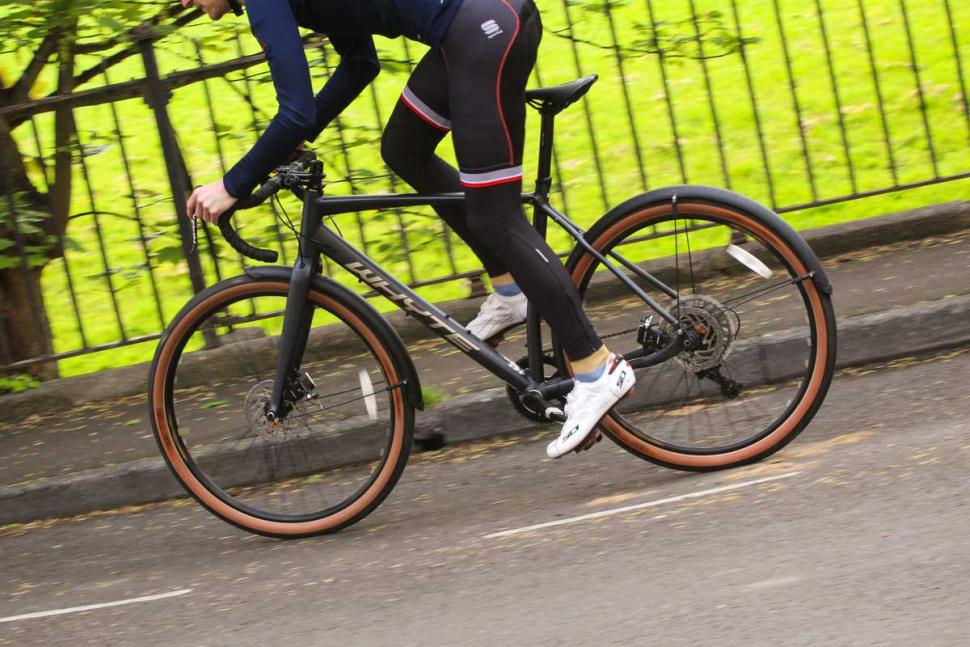
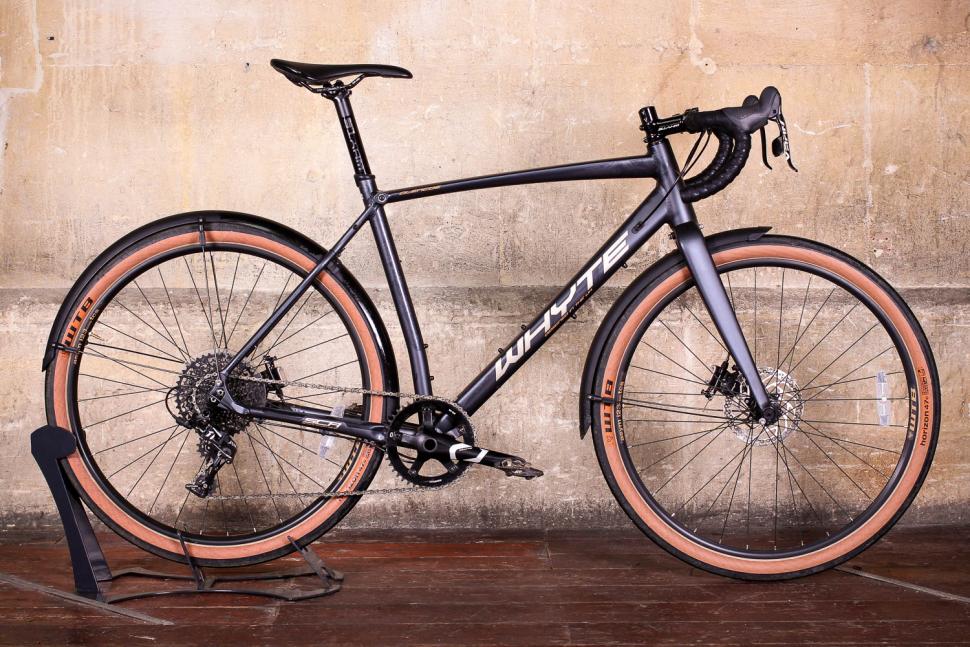



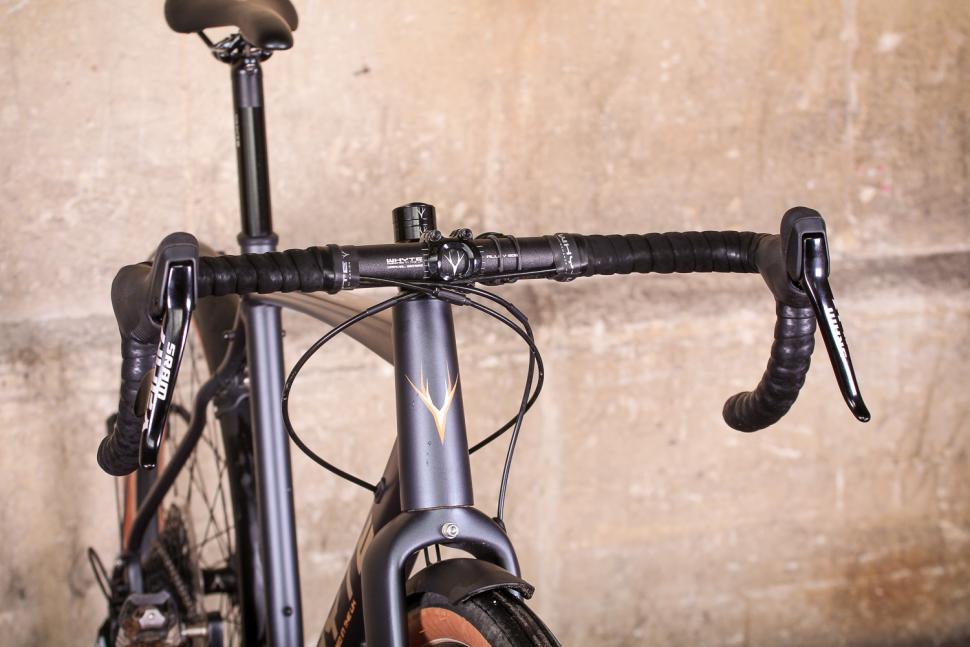
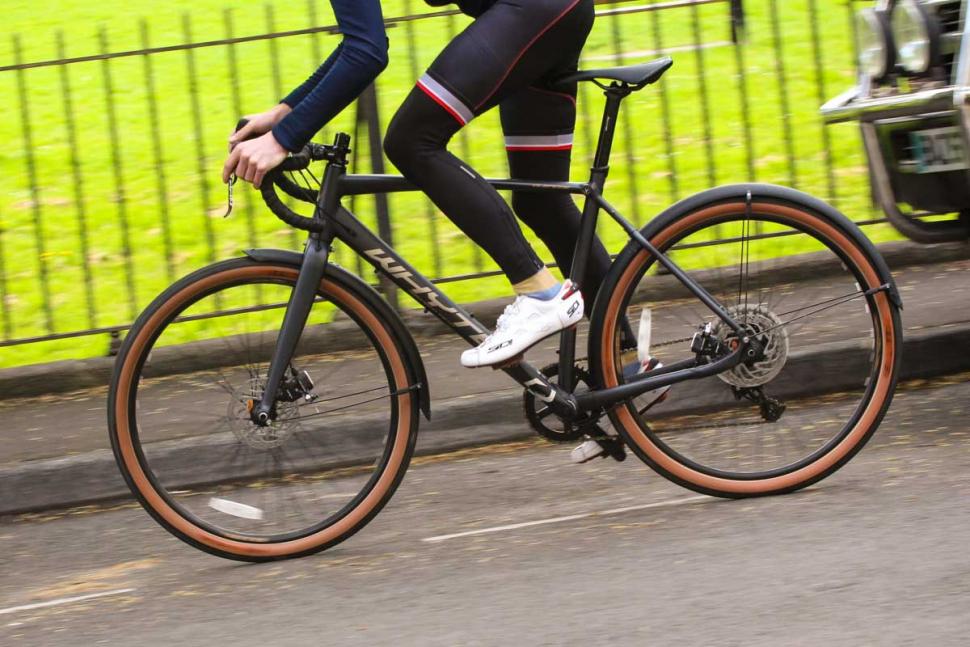
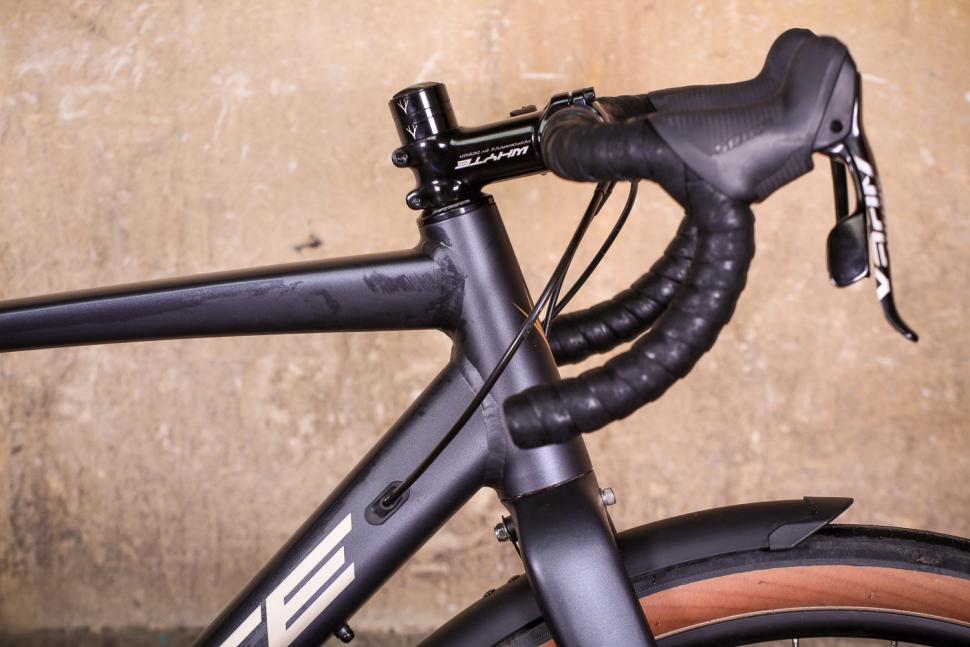
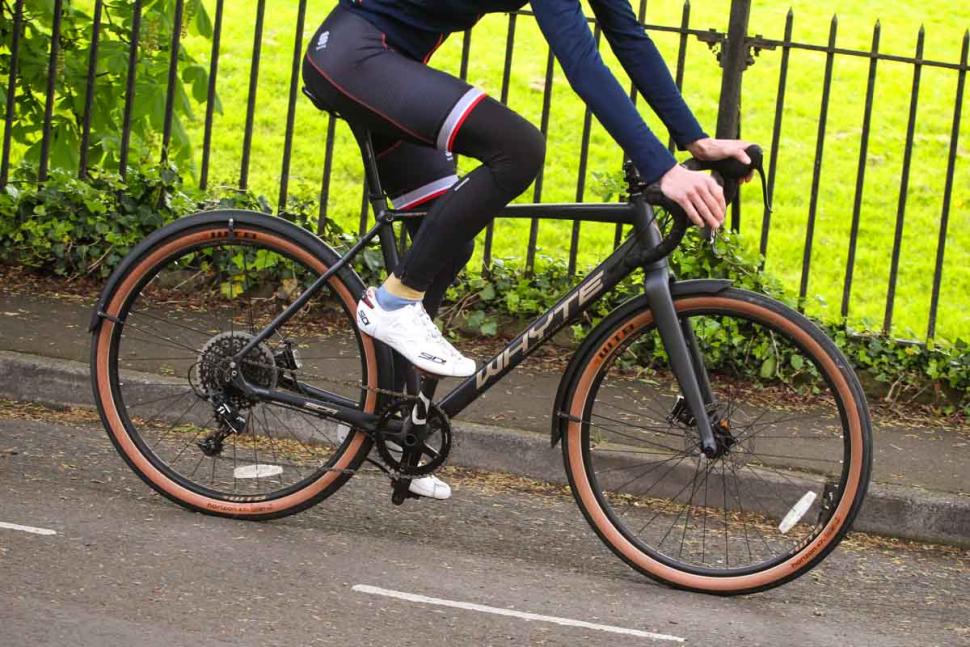

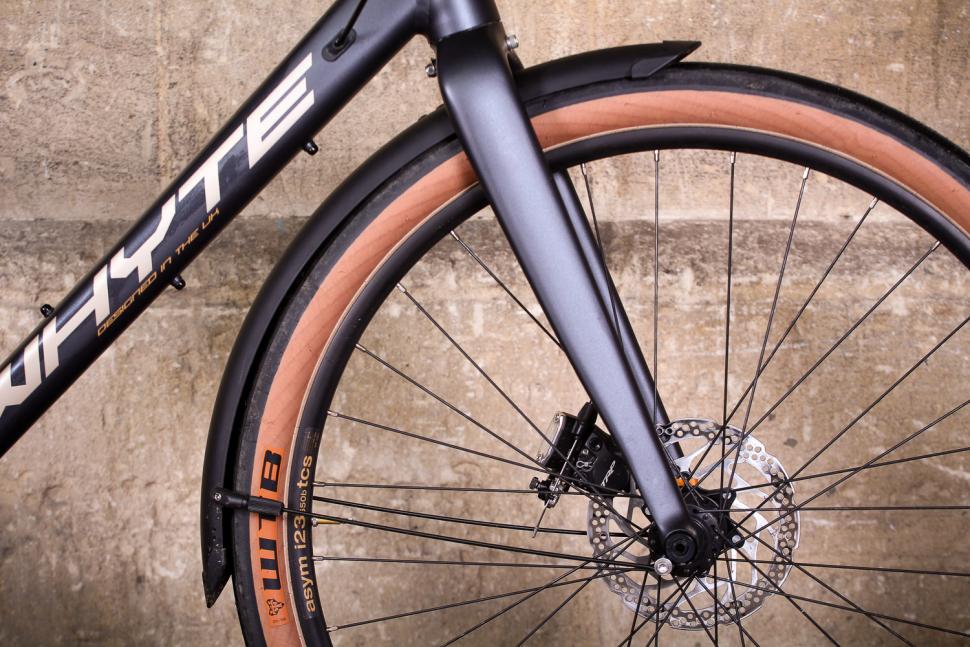
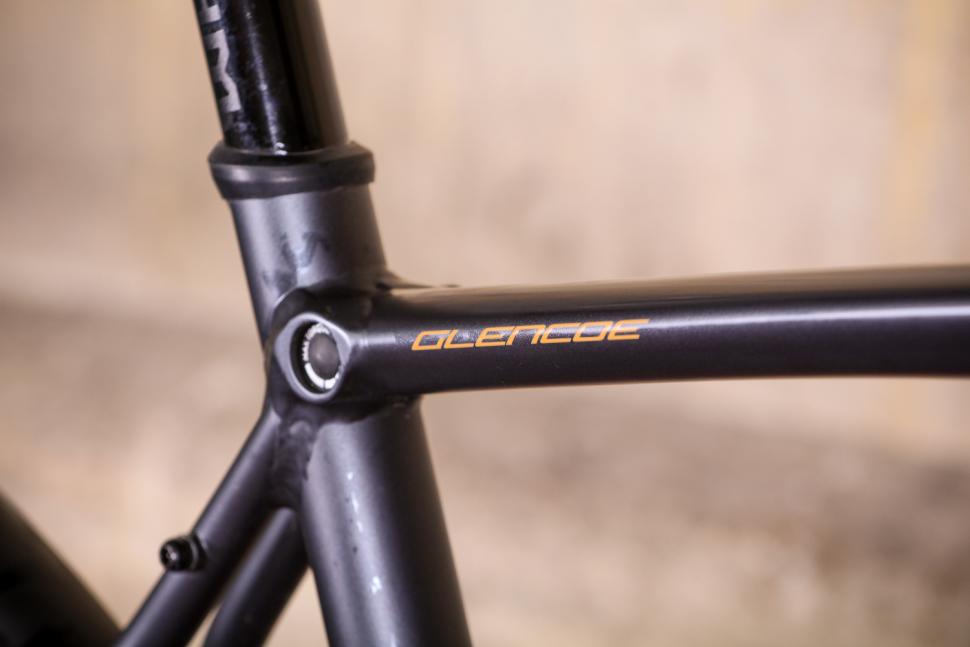


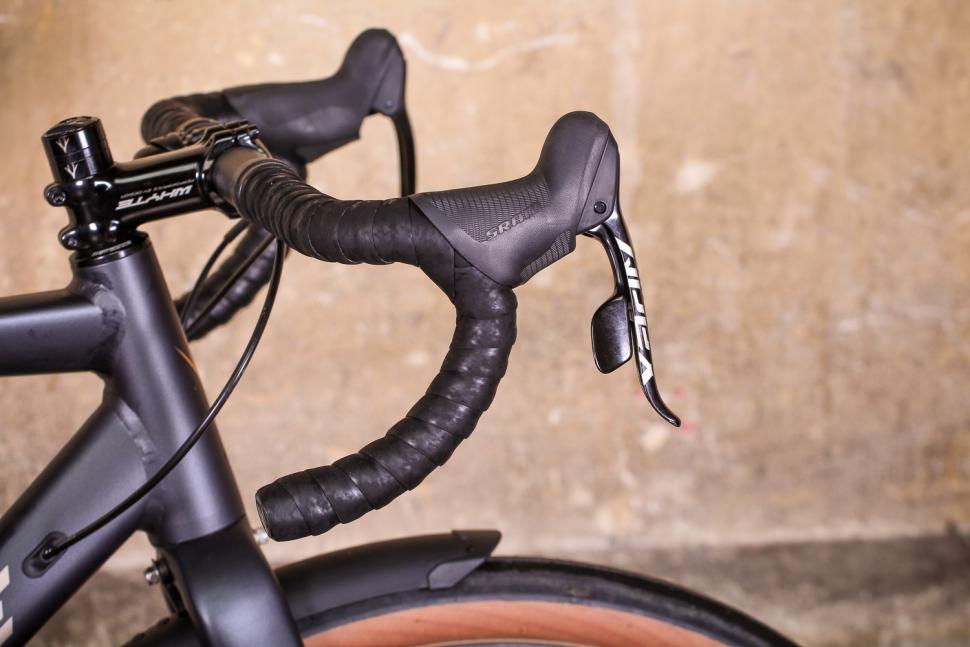





Add new comment
4 comments
Does this bike have proper mudguard mounts? On a different article on road.cc the rear one was held up by zip ties - there was no brake bridge temp or otherwise. Can that be true?!?!?
EDIT: yes it does, just checked in the shop. They must have looked at a pre production version or something
... I just saw it also has a 73mm bb shell too, which is cool. You could stick an xtr crankset in it...
Err no, it doesn't. Unless they've changed it... So, where to start with my Glencoe? I bought it as an indestructible commuter for my 20 mile round trip. It has been an absolute disaster.
First thing I found out was that the mudguards for it were not availble, for another 6 months after I purchased the bike, so I had to bodge some because there are no proper mounting points on the bike, which is pretty special for an adventure/gravel bike.
Within a couple of months the bearings had gone in the front wheel. This was replaced by the shop.
Within 12 months the BB had gone, oh well, nothing too strange. Reading the spec "73mm BB shell" and checking the one that was in it I bought a shimano BB but it wouldn't fit. Turns out not only was the spec wrong, but the BB fitted in the bike was wrong, they had crushed the plastic tube in the original and that's why it had failed. Upon advice from Whyte I bought a replacement Hope, turning down the Raceface they offered. Unfortunately they told me to order the wrong BB, so this wouldn't fit. They then told me the correct part number but didn't offer to buy that for me until I asked them to!
Last month the rear wheel went way out of allignment, so I put it on the stand to true it up, only to find that the spokes were pulling through the rim. A problem I've only come accross with this rim on one comment on one other forum, and guess who the manafacturer of that bike was? Yes. Whyte. I've told them about this problem but had no answer from them.
DO NOT TOUCH WITH A BARGE-POLE
I serviced one of these this week. They have been around for a year or two now. I liked it, there was a lot of good about it - it felt stiff and fast, and the big tires were great. The Hy-rd brakes are realistically as good as full hydro. Some downsides, the welds are amazingly rough, the bars are massively too wide, and the weird own brand crankset is a bit naff. Good value though overall, i thought. i am also unsure if it actually has a 10-42 xd driver wheel and cassette, i was sure it did.